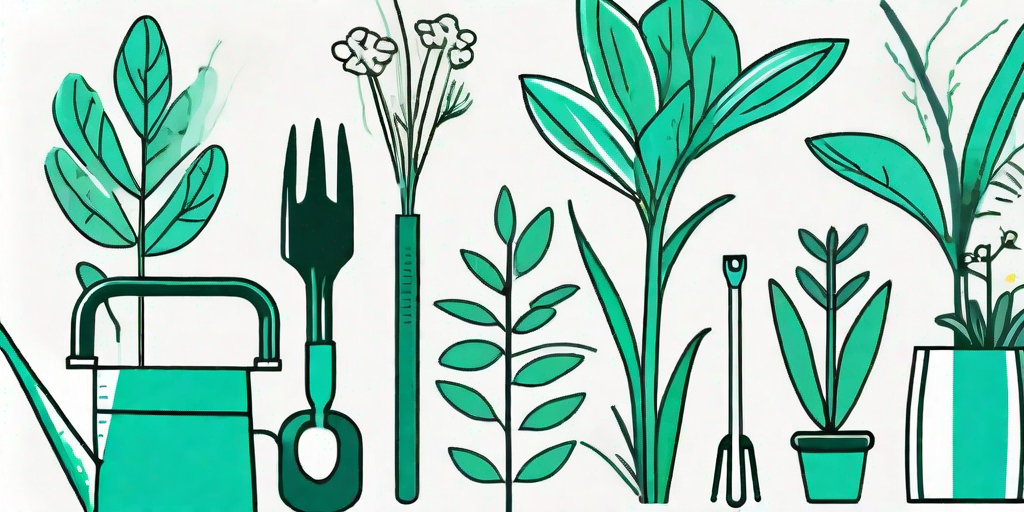
Are you tired of looking at your garden and seeing more leaves on the ground than on the trees? Do you wish for a lush, green oasis that would make your neighbors green with envy? Well, you've come to the right place. We're here to arm you with the best tips and tricks to combat leaf drop and transform your garden into a verdant paradise.
Understanding Leaf Drop
Before we dive into the solutions, let's first understand the problem. Leaf drop, also known as defoliation, is a common issue faced by gardeners worldwide. It's like the balding of the plant world, but unlike human hair loss, it's not always a sign of aging or stress. Sometimes, it's just a part of the plant's natural cycle.
However, when leaf drop becomes excessive or happens out of season, it's a cause for concern. It could be due to a variety of reasons - pests, diseases, poor nutrition, or even the weather. It's like a plant's way of sending out an SOS signal, and it's your job as a gardener to decode it.
The Causes of Leaf Drop
Pests and Diseases
Just like humans, plants can fall ill too. Pests such as aphids, mites, and beetles can wreak havoc on your plants, causing the leaves to drop. Similarly, diseases caused by fungi, bacteria, or viruses can lead to defoliation. It's like a plant's version of the flu, but without the luxury of bed rest and hot soup.
Identifying the culprit can be tricky, but a close examination of your plants can give you clues. Look for signs of pests or disease - spots, discoloration, or deformities on the leaves. Remember, the sooner you diagnose the problem, the sooner you can treat it.
Poor Nutrition
Plants, like us, need a balanced diet to stay healthy. Lack of essential nutrients can lead to leaf drop. It's like your plant is on a diet, but not the good kind. It's starving, and it's shedding leaves to conserve energy.
Regular soil testing can help you identify any nutritional deficiencies. Depending on the results, you can add the necessary fertilizers or amendments to improve the soil's nutrient content. Remember, a well-fed plant is a happy plant.
Weather Conditions
Plants are sensitive to their environment. Extreme weather conditions - too hot, too cold, too wet, or too dry - can stress your plants and cause leaf drop. It's like your plant is Goldilocks, and it wants everything to be just right.
While you can't control the weather, you can take measures to protect your plants. Use mulch to regulate soil temperature, provide shade during extreme heat, or move potted plants indoors during frost. Remember, a comfortable plant is a thriving plant.
Preventing Leaf Drop
Proper Watering
Watering is a crucial part of plant care, but it's also one of the most misunderstood. Too much or too little water can lead to leaf drop. It's like your plant is a Goldilocks again, and it wants its water just right.
Most plants prefer a 'soak and dry' approach - water thoroughly, then allow the soil to dry out before watering again. Remember, overwatering is a common mistake, and it's better to err on the side of underwatering.
Regular Pruning
Pruning is like a spa treatment for your plants. It helps remove dead or diseased parts, promotes growth, and improves the plant's overall health. Regular pruning can help prevent leaf drop and keep your plants looking their best.
However, pruning should be done correctly and at the right time. Improper pruning can cause more harm than good. Remember, it's not about how much you cut, but where and when you cut.
Using the Right Fertilizers
Fertilizers are like vitamins for your plants. They provide the essential nutrients that your plants need to grow and thrive. However, not all fertilizers are created equal, and using the wrong one can lead to leaf drop.
Choose a fertilizer that's suitable for your plants and soil type. Also, follow the recommended application rates and timings. Remember, more is not always better when it comes to fertilizers.
Frequently Asked Questions
- Why are the leaves on my plant turning yellow and falling off?
Yellowing leaves can be a sign of overwatering, poor nutrition, or disease. Check your watering practices, test your soil, and look for signs of pests or disease.
- How can I tell if my plant is stressed?
Signs of plant stress include wilting, discoloration, slow growth, and of course, leaf drop. If your plant shows any of these symptoms, it's time to play detective and find out what's wrong.
- Can leaf drop be reversed?
Yes, if the cause of leaf drop is addressed in time, the plant can recover and produce new leaves. However, in severe cases, it might be too late to save the plant.
Conclusion
Leaf drop can be a gardener's nightmare, but with the right knowledge and care, it can be prevented. Remember, every leaf counts when it comes to creating a lush, green garden. So, arm yourself with these tips and tricks, and say goodbye to leaf drop for good.
Happy gardening!















